You've been to the car shows, cruises, and cars and coffee meets, and maybe to the race track; heard all the restoration stories and tales of resto-mod, tuner car, and track beast builds; and now you want in on the action - you're ready for a project car. Well, we created this article just for folks like you, to help you make smart decisions in your project car search and avoid the pitfalls that many enthusiasts (including some of us) have experienced. But before we go any further you should ask yourself a question: Is a project really the right car for you?
Some enthusiasts are under the misconception that if they invest a lot of sweat equity in a project, they'll end up spending less money than they would buying a finished car. Yet, watch any car auction and you'll see the fallacy of that assumption. Modded and restored cars routinely change hands for a fraction of what they cost to build. In fact, when a car is gaveled sold, "you couldn't build that car for that money" is one of the most frequent remarks you'll hear from auction commentators. But a project shouldn't be the spinach you have to eat to get your desert. If the wind blowing through your hair going on a drive or exhibiting your car on the show field and winning trophies on sunny Sunday afternoons is the stuff of your automotive dreams, then just save your money and buy a car that's already done.
And there's nothing wrong with that. A car enthusiast can be compared to someone taking a cross country trip. Some enthusiasts live for that Sunday drive, the day at the track or the car show, just as some travelers want to step on a plane on the east coast and be enjoying themselves in California a few hours later. Then there are the travelers who want to drive across country, maybe on parts of the old Lincoln Highway or Route 66, see the sights and experience some of the local flavor along the way. For these folks the journey is just as important as the destination, maybe more so. And so it is with a project car. It's simple really, get a project car if you love working on cars. If you're the type of guy who'd rather be in the garage wrenching when everyone else is inside watching football, or lounging in the pool, then a project car is most assuredly for you. So, let's get started!
Which Car?
This part is easy because most enthusiasts already have a particular car in mind. Just make sure the model you've chosen is compatible with your goal - what you want to do with the car. And if you're considering several different models, establishing a goal may help you narrow your choices. Once you set a goal, stick with it or you could end up wasting a lot of time and money. For example, if you initially decide to do a concours restoration and work hard to get the right date codes and matching numbers, all that effort will be wasted if you change your mind and decide to build a driver quality show car where those details don't matter.
Show Car, Sunday Driver
Just about any car, from the brass era right up to late models, will work as a show car that might also be driven sparingly on nice days. Keep in mind though, that with the exception of Model T and Model A Fords, parts availability for early cars can be slim to non-existent, and the knowledge base even more scant. If you want to know something about a 1960s Mustang or Camaro you'll probably be able to get several answers with a quick internet search but try doing the same thing for, say, a 1920s Essex.
Your build should also suit the level of competition you're aiming for. Concours level show cars are carefully scrutinized by judges for originality or unique custom details, and absolute cleanliness. Building a car for this level requires a lot of money, time, expertise and experience, and it's not something that should be attempted by a first-timer. There are plenty of local and club level shows where beginners can compete for trophies with other driver quality show cars.
Show Car, Drive Rain or Shine
If you want to drive your car to national events and club meets that are a considerable distance away, you'll need a car that can be operated safely and comfortably at highway speeds, and in inclement weather. This requirement essentially eliminates original early cars from your selection pool. Most older cars are hard pressed to cruise at 40-50 mph and their poor braking is an even greater speed deterrent. Of course, this can all be ignored if you want to use an older car as a basis for a hotrod that will be upgraded with modern brakes, running gear, and creature comforts.
Insurance is another consideration if you plan on driving that many miles. Many, but not all, collector car policies have mileage per year limitations and yearly odometer readings are required for verification. Make sure you don't have a fixed mileage limit on your policy, so you don't get denied in the unfortunate event you have to submit a claim.
Show & Daily Driver
It can be difficult to keep a daily driver in show-ready condition but it's not impossible. However, there's much more to consider beyond maintaining the appearance. A daily driver, especially one used for commuting, must be reliable. If your show car/pleasure cruiser won't start on show day it's disappointing or if it breaks down on the road it's an inconvenience, but if you have to call out too many times because your show/daily driver won't go you could end up having to look for another job. Of course, a newer car with its more advanced automotive technology will in general be more reliable, but that's not your only alternative when you want your show car to also provide dependable transportation.
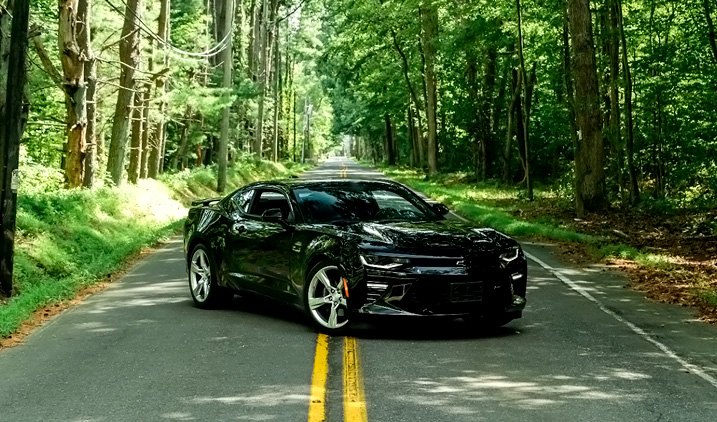
You can still enjoy a classic as an everyday driver if you make some improvements and you're vigilant with maintenance. Upgrades like electronic fuel injection and electronic ignition can make for consistent starting and dependable performance in all types of weather, adding an electric cooling fan can prevent overheating in traffic, and disc brake conversion kits will provide reliable stopping power that never goes out of adjustment. But even with these advancements the bottom line is you'll still have to spend more time under the hood to avoid ending up by the side of the road. You'll have to do things like fix leaks, adjust belts and do other repairs and maintenance that drivers of modern cars don't have to be concerned with.
Finally, be aware that most collector car insurers won't write policies for daily drivers that are used for commuting, so you probably won't be able to get an agreed upon value for your car in the unfortunate event of a total loss.
Original, Modified and Resto-Mods
"They're only original once" is an oft-heard phrase in the car hobby. But what constitutes an "original car"? An "original, unrestored" car is one that still has the majority of the components it came with from the factory, it hasn't been modified in any way and usually has at least a presentable or better appearance. If you're lucky enough to come across one of these gems, just do what you have to do to ensure it's roadworthy and enjoy it. "Matching numbers" is another descriptor pertaining to originality. A matching numbers car refers to one that still has the original engine, transmission and drive axle. The car may be modified, and many other original parts may have been replaced, but as long as those main components are present the car is generally considered a matching numbers car.
If you want to go original and want to make a car as original as it can be, know that other parts like the water pump, fuel pump, alternator, etc. usually have a particular serial number and/or casting number and maybe even a date code that is appropriate for the car at the time it was built at the factory. Some car clubs look for the presence and correctness of this data when judging a car, but unless you decide to show your car at such venues, it's not worth tracking down original parts. These components are commonly replaced during an older vehicle's lifespan and hunting for the correct number, original versions can be time consuming and very expensive.
There's definitely a place for original cars, they're a way of preserving the past. But a car that's kept all original will never function any better than the automotive technology that existed at the time. Nevertheless, if that level of refinement, be it from 1957, 1972 or 1995, works for you, or you want to display your car at shows where originality is important, then enjoy the look and feel that is unique to an original car. However, most enthusiasts will modify their cars to some degree. The aftermarket is chock full of parts and accessories to upgrade older cars, so there's something for you whether you just want to make your classic more reliable or you want performance that rivals modern cars.
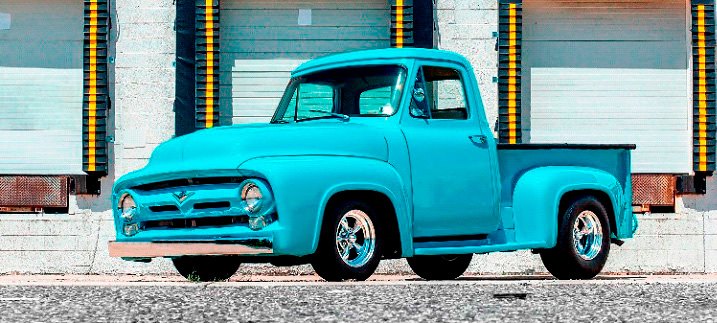
There are EFI kits, electronic ignition conversions, bigger radiators and electric cooling fans, and complete modern replacement engines that make far more horsepower than older mills. You can swap that old 3-speed automatic or 4-speed manual for a modern highway-friendly overdrive box and upgrade to disc brakes. Improve your suspension with shocks, springs, bigger sway bars and larger diameter wheels and fatter tires or go even further with coilovers and tubular control arm conversions. And you can add modern creature comforts to your cabin with an A/C kit, tilt-n-tele column, killer sound system, and custom gauges.
Resto-mods are the ultimate modified car both in terms of the necessary dollar outlay and sophistication. A resto-mod is basically a classic body shell mounted on a custom-built chassis with modern high-performance running gear and suspension and contemporary interior amenities. A resto-mod chassis from a reputable builder can start in the mid $20 thousands and then you must add brakes, wheels & tires, running gear, and a myriad of smaller components like body mounts, exhaust system, etc. and of course, you need the donor car for the body.
Street & Track Car
Many a street car has been driven to the track, raced, and then driven home. Most return under their own power but more than a few have also been brought back on a trailer or the end of a hook. Nothing is harder on a car than racing, even if it's just a 1/8th or 1/4 mile at a time. Power adders like nitrous, superchargers and turbochargers can all provide huge increases in power, but the engine's bottom end must be able to handle it. Combine that power with sticky tires and you have to ensure the drivetrain and suspension are up to it.
But you don't have to make gobs of horsepower or risk breaking things to go racing. You can go fast and have lots of fun in classes and racing that are geared to production cars. If you want to build a street car that will also be used for track days, go to the track and do research online to see which cars excel at the type of racing you want to do. It can be cool to be different but there's no joy in flogging something that has no chance of winning or even being competitive. Find out what modifications that a production car must have to be competitive and meet the safety requirements mandated by the racing organization.

Going to the track is the smart way to go fast. You're much safer and you won't have to worry about losing your license. If you just want to be able to go faster than you can legally and be able to push your car to the limit, and compete with similar production cars, you won't have to spend a lot and your car will most likely remain reliable and streetable. But if you want to go really fast and still drive on the street, just know that high horsepower engines can be finicky and not be happy idling or crawling along in traffic. Roll cages look cool, but if your car is fast enough to require one they can also make getting in and out of the car a hassle. And while DOT racing tires may make your car legal for the occasional visit that wows the crowd at the local cruise, with their sparse tread and shallow tread depth you wouldn't want to be caught in the rain with them.
What's Your Budget?
Deciding on the car you want becomes just a hypothetical exercise if at the end of the day you can't afford it. Like with most things in life, what you have to spend will ultimately determine what you can buy. But, you can stretch your dollars if you're smart with your money. For example, don't buy the first car that comes along just because you can afford it at that moment. A cheap car that needs a lot of work can end up being costlier than if you wait and buy a higher-priced example that needs less work. Although you can keep some costs low with sweat equity, in general the more work a car requires, the higher the overall cost will be, especially if it's work that must be farmed out, like engine work, and bodywork and paint.
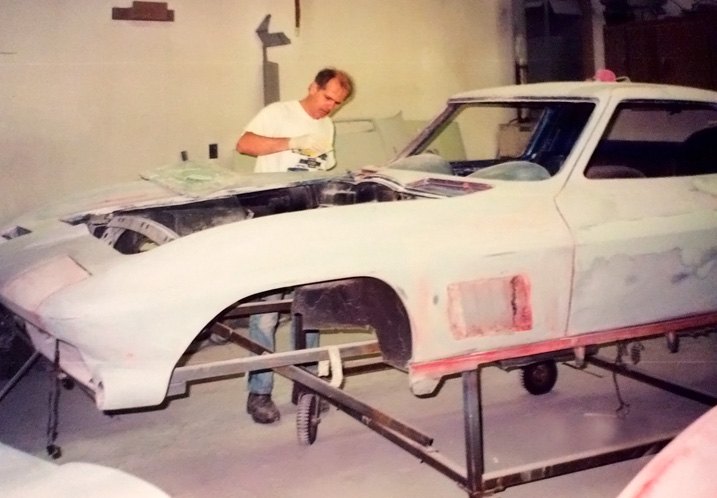
The model you select can also directly affect the overall cost of your project. Parts & accessories for popular models like Mustangs, Camaros, Honda Civics, trucks and muscle cars are generally more readily available and less expensive than those for more uncommon or exotic machines. Another way to save cash is to buy a car that's partially completed. Yes, you've probably read elsewhere that this is exactly the thing not to do, that you'll just be getting someone else's headache. But not every project comes to a halt because some hidden damage or butchered repairs were discovered that the owner then wants to pawn off onto someone else. People decide to sell projects because they lose interest, find another car they want more, or suddenly need money for a baby, marriage, or tuition. If you can accurately evaluate the work that's been done to the car and the quality of the parts that are included, you can save yourself money and time.
Assess Your Mechanical Capabilities
The more work you can do on the car yourself, the less your project will cost. Besides, isn't the enjoyment derived from doing the work what a project is all about? Nevertheless, there will inevitably be things you have to pay someone else to do, so you should make a realistic assessment of your capabilities, so you can budget for what you can't do. You should at least have some basic wrenching abilities, but doing a project is also the perfect time to learn. Unlike your daily driver that must be able to go on Monday morning no matter what, with a project you have the time to develop new skills and expand your wrenching comfort zone by tackling a job you may not have considered doing before. The internet is packed with how-to information and videos on repairing, reconditioning and building just about every part of a car, and there's lots of print info available as well.
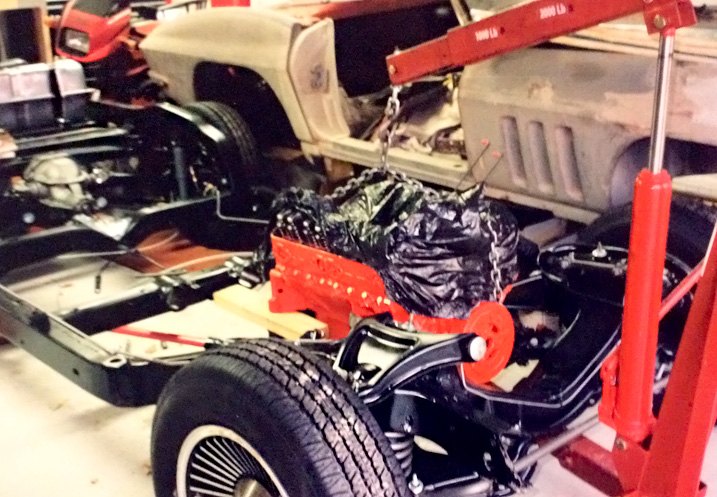
To work on your project, you'll need at least a basic complement of hand tools. You may be able to borrow tools that you don't have and any that you want to buy must be budgeted for. Large, difficult to store tools that you may only need once or twice, like an engine hoist, can be rented. But even if you're knowledgeable and have a pretty good arsenal of tools, there are jobs that require equipment and skills that are beyond the scope of the average DIYer, such as chroming, painting and engine rebuilding. That said, you may be able to save money here as well by doing some of the work. For example, the body shop may charge you less if you strip the old paint off yourself, and instead of having the engine rebuilt, disassemble and reassemble it yourself, and have the engine shop just do the necessary machine work.
Workspace
Where there's a will, there's a way, and while there have probably been more than a few projects that came together in a driveway or backyard, it's obvious why these are less than desirable locations for working on a project car. Your workspace should be conducive to wanting to work on your project, so you really need a garage. With a garage you have protection from the elements, so you can work regardless of what's going on outside. You'll need ample lighting when you want to put in some time in the evenings, and even a garage with minimal lighting that's only been used for storage can easily be upgraded, especially with modern energy efficient LED lighting. It's also much safer to support a car on a concrete floor, and smooth concrete makes it easier to roll on a creeper when you're doing work on the underside.
If you don't have one, using a friend's or relative's garage may be an option. You may also be able to rent garage space. Web sites that list DIY garage space for rent are a relatively new but growing phenomenon, you can also advertise or may be able to find someone on Facebook Marketplace or Craigslist who has a garage to rent. If you're thinking of a storage unit be aware that many won't allow you to work on your car and don't have much electrical service beyond a light. But unless you're able to negotiate a reasonable long-term lease, rental costs that are by the month can blow a huge hole in your project budget.
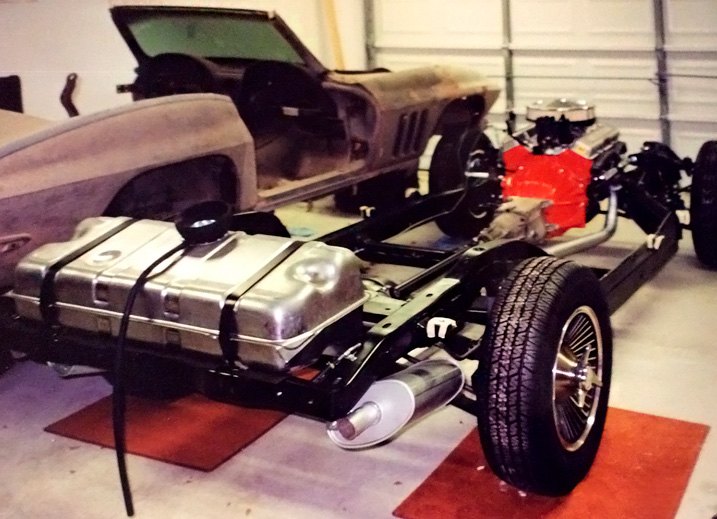
While you may feel lucky to have one bay, for a project car one bay is usually not enough. A project car can easily take up two or more bays when it's disassembled, especially when it's a frame-off restoration. And in addition to space for parts that have been removed, you'll need room for parts that have been ordered but not yet installed, and subassemblies that have been reconditioned but not yet installed. Ideally, you should also have a workbench or at least enough room to work when you're rebuilding or reconditioning components like carburetors, transmissions, etc. Finally, if you're lucky enough to have plenty of room, place the car where it won't be in the way and you have easy access for work, because once you start taking it apart it will be difficult to move.
Time Frame
This is another area that requires an honest evaluation - how much time you can regularly devote to working on your car. If your life is so filled with job, family, home and yard work, and other obligations, that you rarely have time for anything else, then maybe a project car isn't the way to go. If you don't have the time, you won't make much progress on the car, and a lack of progress usually results in loss of interest and the sale of the project, often at a loss. Of course, even if you can spend plenty of time on your car, you must still have realistic project time frame expectations.
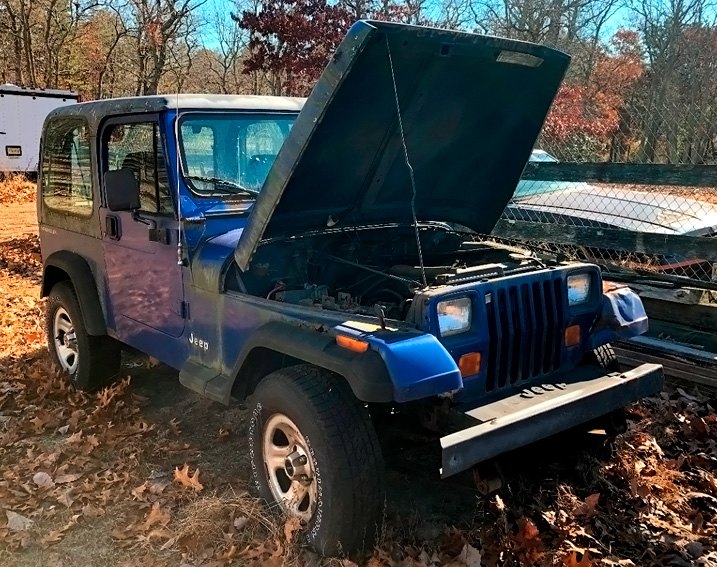
Embarking on a total restoration or making extensive modifications to a car for performance, racing or customizing will generally take the most time; there's greater potential for loss of interest, so such an undertaking may not be the best choice for a beginner. Also, while it's very satisfying seeing your project come along because of your own handiwork, doing everything yourself will naturally take more time. However, if doing that doesn't mesh with the timeframe you have in mind, then it may be wiser to sublet some of the work to speed things along. For example, even if you had planned to rebuild your transmission and set up your differential yourself, letting a trusted shop handle those jobs while you work on another part of the car will get you closer to the goal line.
You can also avoid becoming frustrated with a lack of progress or losing interest in your project by breaking up the work into chunks that won't have the car laid up for too long. This process can work if you're building a driver quality show car, a late model street beast or a street/track car. Do what you must do to make the car drivable and then work on different parts of the car a little at a time. Maybe upgrade the brakes or suspension, or install the headers, which may not take that long, when the weather is nice, and you don't want the car off the road for long, and do major parts of the project like the engine or body and paint during the winter when you won't be driving it. Doing this will allow you to drive and enjoy the car during the project, plus you'll be able to see and feel progress with each step.
Do Your Homework
To make an informed decision, you should learn as much as you can about your chosen ride before you commit to ownership. Know how to identify different models, trim levels and standard and optional equipment. If you're looking at a supposed original car, know what to look for to prove it's the genuine article, especially if the owner is asking original car money. And if the car is represented and priced as a genuine performance model, i.e. SS, GTO, Roadrunner, know the ways to determine the car really didn't start out life as a Malibu, Le Mans, or Belvedere.
But it's especially important to know the problem areas that are peculiar to the model, so you know what to look for when you're checking out a prospect. This way you can avoid being "surprised" by extensive and unexpected damage down the road when you're knee deep in the project. For example, if you're looking at a car that's notorious for having rotted out floors, make sure you get underneath the car and look for rust holes, rot or undercoating that may have been applied to hide damage or poorly made repairs. Pull back the carpet to check for damage topside. If the owner won't let you look under the carpet, he may have something to hide; just walk away and look for a better car, or if you really want the car just take for granted that the floors will have to be replaced and factor that into your offer and your project timeframe.
There are web sites and message boards devoted to many makes and models where you can find information. Many car clubs have an online presence, both at the national level and with local chapters, and they can also be a great source of info. Most message boards are searchable, so you may be able to find an answer to your question in the archives. You can also go to car shows, cruises, cars & coffee events, swap meets or the race track and ask questions. Car enthusiasts are great people, and no matter whether you're communicating with them online or in person, most are always ready to talk cars, answer questions and give advice.
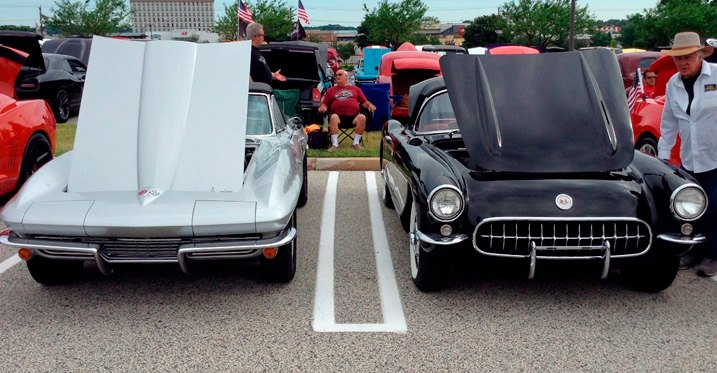
Equity
Undertaking a project should be about enjoying the experience of restoring, modifying, or building a car, but the value of the end result vs. the time and money expended should still be considered. It can be just as expensive and time-consuming to restore/build a 4-door, unpopular make/model, or base trim level car as it is to do a popular model that is generally accepted to be of greater value to collectors and enthusiasts.
Nevertheless, if you have your heart set on a Rambler station wagon because of the wonderful memories you have of Grandpa and his wagon, then go for it. Although we've discussed equity and establishing goals, at the end of the day you should do the car you want to do, the one that gets you out in the garage, not necessarily the one that's most practical. Just understand that if you do eventually decide to sell the completed car, it's unlikely that you'll be able to find a buyer that values the car as you do, and you probably won't recoup your investment in time and money.
Sources for Project Cars
Besides the usual sources like Craigslist, eBay Motors, and Facebook Marketplace, check online marque web sites and message boards, and car club sites. These often have cars and parts for sale sections. There are also web sites that are dedicated to selling cars and parts for all types of racing. Go to local and regional swap meets and auctions. Even if you don't find exactly what you're looking for, talking to other enthusiasts at these events may point you in the right direction.
It's common to see for-sale signs on cars at cruises, car shows, cars & coffee meets, and at the track. But even if you don't see anything that's appealing, letting fellow enthusiasts at these gatherings know what you're looking for may provide some good leads. Good old-fashioned word-of-mouth can work as well. Tell everyone you know, even if they're not into cars, that you're looking for a project. You never know what could be lurking out there and sometimes knowing there's a potential buyer can spur an owner who's been sitting on a car to sell.
Inspecting the Car
When you go to check out a potential project don't go alone. Bring a friend, preferably one with car buying/inspecting experience, but definitely one who can provide a dispassionate opinion. Sometimes a buyer can become so keen on a car that they overlook or discount significant defects or try to rationalize a price that's higher than what they planned to spend. Having someone with you that can look at things objectively may save you from bringing home a car that could ultimately turn out to be a mistake.
Rust and poorly done bodywork are the most important defects to check for. Mechanical parts can be repaired, but depending on the severity, rust can be difficult or impossible to eradicate, or the price of doing so may be prohibitive. Rust is common on cars that have spent their lives in the "rust belt", where salt is used on the roads in winter. The frame is the most critical area. Visually inspect for rust and areas that look like they've been repaired, or painted or treated with undercoating, as this may have been done in an effort to hide damage or a repair. If you suspect rust, tap on the area with a hammer to see if it's solid. A borescope can be used to check inside the frame and there are inexpensive units available that work with a smartphone or tablet for viewing.
Look for body rust in the floor pans, trunk, rocker panels, doors, fenders, wheel wells, quarter panels, and any other areas where rust is common on the particular model. If you've done your homework, you'll know where to look. Sight down the body looking for waves that are evidence of poor bodywork. Use a refrigerator magnet to check for body filler - the magnet should stick to steel body panels, if you come across an area where it doesn't stick, Bondo or some other type of filler was probably used to make a repair. Check the door jambs and weatherstripping for evidence of different colors, overspray and a repaint, and check the body panel fit and alignment.
If you intend to use the original mechanicals, then check their condition just as you would with any used car: Look for fluid leaks and check the condition of all fluids. Engine oil can appear milky if it's mixed with coolant and this could indicate a blown head gasket or worse, a cracked block or cylinder head. Sludge in the coolant is also a sign of coolant and engine oil mixing. Also look for rust in the cooling system and evidence of burnt transmission fluid. If the engine runs, listen for unusual noise and look for smoke. If you're looking at a 1996 or newer vehicle, plug a scan tool into the OBD port and check for DTCs (Diagnostic Trouble Codes). If there are no codes make sure the readiness monitor indicates that the OBD-II drive cycle is complete as this will not be the case if codes have been cleared.
Check the condition of the suspension and steering as well. Even if you're going to retain the original drivetrain and other mechanical systems, you're no doubt going to be making repairs, reconditioning, and making upgrades. Doing a preliminary inspection can identify problems, so you know what you're facing, and it can affect what you're willing to pay for the car. Of course, if the driveline and other mechanicals will be replaced or extensively modified and upgraded, then inspecting the present mechanicals may be unimportant.
Check the vehicle serial number and body tags to verify make, model, original colors, trim levels, etc. If you're going to do a restoration and the car is represented as being all original, verify that the serial numbers match on body, engine, and any other locations. If you've done your homework, you'll know what components have these numbers and where to look. Ask for documentation that can back up claims of originality. Ask the seller if they have any receipts for service/repair work performed during their ownership and if they received any from previous owners. If you're buying a late-model car, a CARFAX may be an additional source of information. Finally, make sure the owner has clear title to the vehicle and any other paperwork is in order, so you don't have any trouble taking title to the vehicle and registering and insuring it in your name.
We hope that the tips we've gathered here help you find the project car that's right for you. Although we've emphasized practicality, we know that for most in the hobby, restoring and building a car is a passion that can't always be looked at with a cold eye. The information we've provided can help you make an intelligent project car choice, but ultimately you have to buy the car that makes you excited to be out in the garage.

